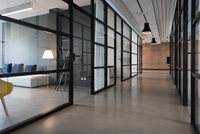Chester & Cheshire
- Home
- Add Listing
- Going Out
- -- Night Clubs
- -- Pubs & Bars
- -- Restaurants and Cafes
- -- Theatres and Cinema
- Pets
- Places to Stay
- Professional Services
- Services
- -- Business To Business
- -- Childrens
- -- Finance
- -- Hairdressers and Beauty Salons
- -- Health & Safety
- -- Property
- -- Tradesmen
- Shopping
- -- DIY
- -- Electrical Equipment
- -- Entertainment
- -- Fashions
- -- Galleries
- -- Home Improvements
- -- Motoring
- Things To Do
- -- Attractions
- -- Outdoor Activities
- -- Sports
- Retail Therapy
- Chester Tourist Guide
- -- Chester Zoo
- -- Chester Cathedral
- Links
- Blog
Quick Search
 If we break interior design into its two basic areas, we are left with residential interior design and commercial interior design. This classification is based on the application of different design theories and practices to create spaces either planned as a residence or business. Interior designer Cheshire is highly-skilled and experienced with helping residential and commercial properties achieve their full potential. What’s the Difference? The vision, requirements and perspective for a residential interior design project are simply extensions of the resident’s preferences and personality, reflected in the structure of their home. The project might be a completely new structural design or a renovation. Commercial interior design, on the other hand is all about setting a space up for business and service activities. It has a completely different set of parameters and requirements. The scope and applications of this branch of interior are vast. Establishments like retail shops, office buildings, restaurants, hotels and many others come under this category. Here are the five key factors which contribute to a successful commercial interior design. Keep Structures Versatile Keeping interior structure elements in mind, the best way to ensure that the interior space is easily convertible is to keep them versatile. This particularly applies to purely commercial establishments such as retail shops and office buildings. For example, in a commercial space at an airport, the cubicles are planned and spaced in such a manner that it is easy to customise and move the shops around easily with minimal fuss. The same idea can be applied to any commercial space where the interior planning and designing is done in the most optimal way in order to enable easy conversions and frequent adaptations. Adaptability is stressed upon by all competent interior designers. Consider Technology Implementation A seamless system of technology implementation is absolutely essential in a working commercial space. While planning the interiors, thought and facility should be given for telecommunication systems including computers, telephones, overhead media and even television. Having a proper plan in place for implementing digital control, centralised or decentralised is a common requirement. The point of this is to address the comfort and effectiveness of the guests and workforce in their own area of activity. Keep Aesthetics Upgraded Commercial interior design also addresses aesthetic creativity for interiors. The elements in presentation could evolve and change with the times without having an affect on the basic branding parameters like brand colour palette. For example, the design of an office interior should have some designated convertible areas which can be creatively utilised and changed without affecting the more stable structures in the building. Providing Personalised Space For customer-based commercial spaces such as hotels and restaurants, making customers feel at home is all about giving them the choice to get an environment and service as per their personal preferences. Devising an interior design plan which creates space with a provision to satisfy personal interests and preferences is immensely beneficial for the business. In today’s competitive business scenario, relatability is known to be the pivotal factor which decides customer retainment. |
Archives
March 2023
July 2022
May 2022
April 2022
October 2021
August 2021
April 2021
March 2021
November 2020
October 2020
September 2020
August 2020
July 2020
June 2020
May 2020
April 2020
March 2020
February 2020
January 2020
September 2019
July 2019
June 2019
April 2018
January 2018
December 2017
November 2017
July 2017
April 2017
April 2016
March 2016
January 2016
December 2015
October 2015
August 2015
May 2015
January 2015
September 2014
July 2014
November 2013
July 2013
November 2012
Other Sites In The "North West and Wales" Network
North Wales Online Community
Nursing Homes North West and Wales
Accountants North Wales & North West
